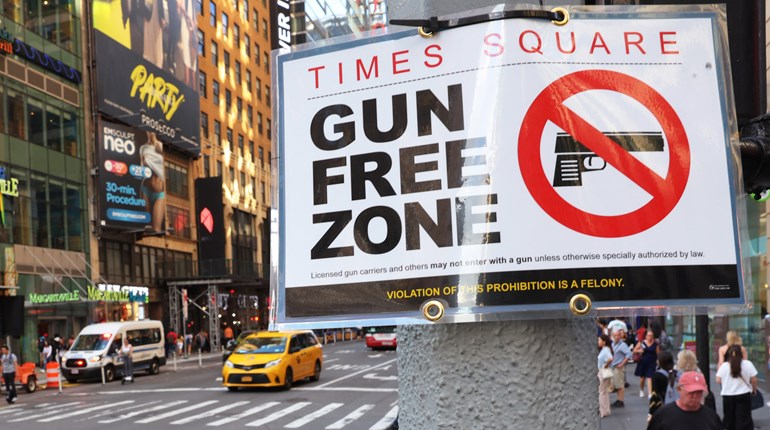
When a violent husband barged into a California elementary school last week and killed his wife, a special needs student and himself, the media had a heyday. While most in the “mainstream” press basically ignored the fact that the murder-suicide was in a gun-free zone in the state with the most restrictive gun laws, writers and editors were quick to spout off “research” about domestic violence and guns.
We took some of those claims to criminologist and researcher John Lott, president of the Crime Prevention Research Center and author of the new book, The War On Guns: Arming Yourself Against Gun Control Lies.
A1F Daily: Following last week’s murder-suicide in a San Bernardino school, media outlets were quick to throw around “statistics.” One we saw several times was: “Whenever a gun is present in a domestic violence situation, the chance of a homicide increases.” What does your research show on that topic?
John Lott: The public health research behind this claim is faulty. One big problem is that it ignores the difference between murder and homicides. The difference is a simple one: Homicides include justifiable self-defense cases, but murder does not. To say that homicides rise when there is a presence of a gun thus doesn’t differentiate between whether there is an increase in self-defense or murders.
Even if the public health research focused on murders instead of homicides, only a tiny percentage of defensive gun uses end in death. Looking only at cases where someone dies misses out on all the defensive gun uses that don’t result in deaths and still protect people. About 90 percent of adult murderers had criminal records as adults.
Nor does the claim attempt to differentiate between whether it’s criminals or law-abiding citizens using guns. About 90 percent of adult murderers had criminal records as adults. The vast majorities of those who kill their domestic partners have a violent criminal history. Men who have a violent criminal record are the real danger for women, and owning a gun is already illegal for those men. Accounting for criminal history would eliminate their finding even with their flawed approach.
A1FD: On the other side of the coin, many gun-rights proponents say those who are the victims of domestic violence need a firearm for protection. What’s your take on that?
Lott: Guns do make it easier to kill. But there is a simple biological fact that gun control advocates ignore. Men are typically much stronger physically than women, particularly when it comes to upper body strength. Unfortunately, real life isn’t like the movies where one single woman knocks out and overpowers several well-trained men. Men also tend to be faster runners. Even without a gun, men can do a lot of harm to, or even kill, a woman.
The research in my book More Guns, Less Crime shows that murder rates decline when either more women or more men carry concealed handguns. I found a woman carrying a concealed handgun reduces the murder rate for women by about 3 to 4 times more than a man carrying a concealed handgun reduces the murder rate for men.
A1FD: CNN reported that 54 percent of all mass shootings involved someone shooting “a current or former intimate partner or family member.” But again, none in “mainstream” media said anything about the school being a gun-free zone. Please remind us what your research has shown on that topic.
Lott: The media just refuses to mention when mass public shootings occur in gun-free zones, even though that is consistently the easiest part of these attack to report on. Since at least 1950, more than 98 percent of the mass public shootings have taken place where general citizens aren’t allowed to have guns for protection.
What the media also ignores are the benefits of having a gun for people, particularly those who are weaker physically—women and the elderly.
For additional information dealing with gun control and the Second Amendment, check out John Lott’s newest book, The War On Guns: Arming Yourself Against Gun Control Lies. You can order The War On Guns directly from amazon.com or barnesandnoble.com.

































